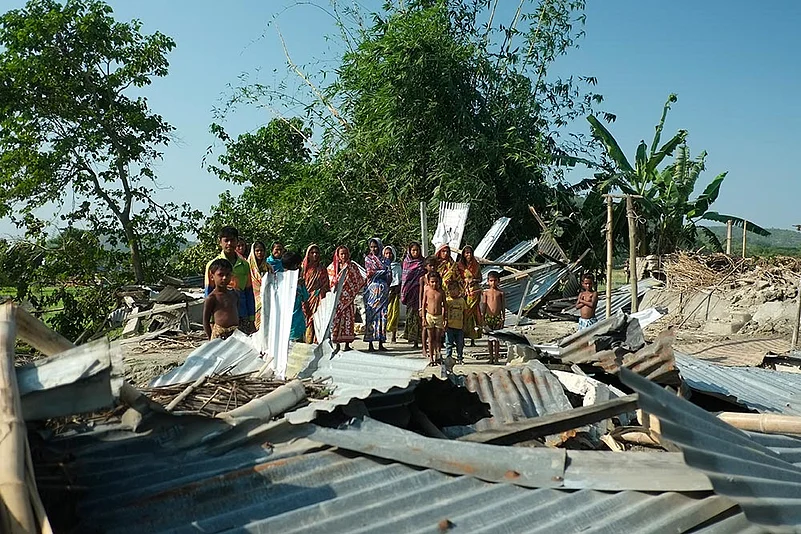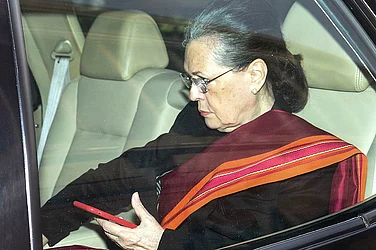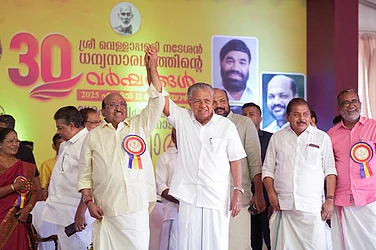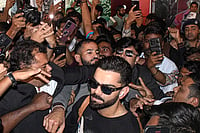It’s almost like waiting for a seismic event that has been prophesied. As the New Year approaches, Assam is bracing for a precipitate moment in its political history: the first draft of the updated National Register of Citizens (NRC) is to be published on December 31. The Supreme Court-monitored process, which will enumerate and name all Indian citizens in Assam, is the first update since 1951.
It will be an event that brings together, in one mekhela weave, most strands defining Assam politics—history, demographics, ethnicity, religion, language—and spins an unpredictable tale going forward. As crucial as those named and included as citizens will be those who get left out. No light is being allowed in through the cracks, but perhaps there will be lakhs of them. Once the draft is published, those left out can file objections, which will be heard, before a final draft takes shape.
The 1951 NRC was based on that year’s census. The difference between the two—the exercise is restricted to Assam at present—lies in the layers of verification that is going into producing the register of citizens. The exacting procedures are expected to bring a more lasting and credible set of data than what has been thrown up by the more error-prone methods in use till now, including by the foreigner tribunals.

Homes demolished in Gandhia Pathar
The immediate concern, naturally, will be how India decides to treat those officially designated as non-citizens. They will be the classic stateless people of modern times. Can they be fully rehabilitated? Can they be deported? India will ideally like to repatriate them, but Bangladesh will surely have other opinions. Will they then be kept cooped up on ‘reservations’? Lakhs of people in a limbo, in a state that looks upon them with suspicion. On a scale comparable to the total Rohingya refugee numbers.
The suspense over numbers is warranted, because there’s a lot spinning around that. Scores of human stories—flowing from the inevitable errors in such a mammoth exercise. Shifting legal definitions of citizenship. Age-old conflicts around ethnicity and migration. And the spectre of a polarised religious edge to politics—with a faraway radical Islamist outfit, PFI, finding a toehold in a newly Hindutvaised polity. Security fears are never too far either in a state bruised by insurgency.

These children in Nellie haven’t seen their parents since they were detained as illegal immigrants five years ago
“We are prepared for the worst,” says Assam DGP Mukesh Sahay. “The Centre has deployed 50 additional companies of central forces, besides providing intelligence support and helping us monitor social media to rule out rumour-mongering and misinformation. We are watching organisations such as the PFI and some students’ unions. Since December 1, thousands of verification teams are out on field visits, making people aware that this is only a first draft and there are options available to establish their credentials. The government has said no citizen will be left out, and people are cooperating.”
The NRC exercise may eventually help things settle down, but it has to negotiate perilous waters before getting there—an ironically apt way to mark 40 years of the Assam movement. Back in 1978, a byelection, brought on by the death of the Mongoldoi Lok Sabha member within a year of being elected, had triggered it all. Observers noticed that the electorate had spiked by about 40,000 voters within a single year. The All Assam Students Union (AASU) and others protested and demanded that the poll be stalled till the illegal immigrants had been detected and struck off the voters list.
Assam was then roiled by years of violence and insurgency—with the blood-splattered calendar pock-marked by episodes like the 1983 Nellie massacre, in which over 2,000 Bengali-speaking Muslims were gunned down across 14 villages in Nagaon district. The same year saw the Illegal Migrants (Determination by Tribunal) Act, or the IMDT. The movement culminated in the Assam Accord of 1985, under which the Centre agreed to deport all “illegal immigrants”, those who had crossed the borders after March 25, 1971, the day the Pakistan government launched Operation Searchlight, a crackdown on the movement for Bangladesh’s liberation. Those who had come in during 1966-71 were to be considered citizens, but disenfranchised.
The intervening years saw patchy movement—the issue always there on the table, simmering, while actual determination of who was or wasn’t an Indian was a tardy, messy process. From 1985 to 2012, there were only 40,000 detections and 2,442 “physical expulsions”. This is with a total of 32 sitting tribunals adjudicating on cases brought before them by border police who, it was said, had monthly targets. Randomness and error, naturally, marked the whole affair.

Evicted villagers of Gandhia Pathar display NRC legacy data as proof of citizenship
Meanwhile, official data hinted at ongoing immigration: between 1981 and 1991, three border districts—Karimganj, Cachar and Dhubri—saw population growths of 42, 48 and 57 per cent respectively (though a detailed counter exists to that, since Muslim figures don’t show a corresponding rise). In 1997, the Election Commission marked 3.5 lakh “doubtful voters”. Overall, everyone knew an issue existed, but the tabulation was weak. The situation satisfied neither a human view—the fears of a dirt-poor people who had lived two-three generations in India, evolving a distinct form of Bangla with heavy Assamese influence—nor the clinical methods desired by a nation driven by its own security fears.
It’s against this backdrop that, in 2005, while deciding present CM Sarbananda Sonowal’s old PIL against the IMDT Act (filed when he was with the AASU), the Supreme Court held that illegal immigration was a form of “external aggression”. (This recalled what then governor S.K. Sinha had in 1998 called “the silent and invidious demographic invasion of Assam”.) In the same vein of clearing up the cobwebs, the apex court issued a set of directions while deciding another PIL in 2014. It ordered proper border fencing. It referred a few thorny issues—such as whether a child born in India to illegal immigrants would get citizenship—to a constitution bench. And it moved in to monitor the whole NRC updation process in Assam, which is now bearing fruit within three years.
The PFI
Now, as D-day nears, there’s a sense of premonition in the Northeastern state that has for decades been a pin-cushion for insurgencies on ethnic, religious and other lines. State agencies fear a heightening of communal tension in pockets. There’s particular concern over the Popular Front of India (PFI), a radical Islamist outfit with its origin in Kerala that’s made inroads into Assam (see box). Though it’s backing the NRC process as of now, the hanging threat of mass deportations could offer a fertile ground for its brand of politics. Especially because the arbitrary, often faulty, handling that has marked the process till now lends itself to a narrative of ethno-religious persecution.
Take an incident from June 2017 in Goalpara district in the south-east, not far from the Bangladesh border. The 100 Foreigners Tribunal benches operating in Assam (under the Foreigners Act 1946) have become a source of brisk business for lawyers and middlemen who charge in tens of thousands—often more than lawyers in the Gauhati High Court—from poor peasants and labourers charged with being illegal immigrants.
In February, a local lawyer allegedly assaulted tribunal members in Goalpara town. He and three others were arrested (later released on bail) and charged for the assault. In June, the lawyer decided to organise a protest. He was denied permission, but held it any way. The plan was to stall traffic on NH-37, an arterial road for the entire Northeast, which also connects the state capital with the rest of the country.
Leaflets said the non-violent protest was to protect the interests of both “Assamese Muslims and Bengali Hindus” who were being classified as “doubtful-” or “D-voters” by election officials. The call attracted some participants from around Khuta Mari, a village on the south bank of the Brahmaputra, right below the Naranarayan Setu. The usual scenario: a crowd slightly out of control, a baton-charge, some stone-throwing (each side blaming the other). In the end, the police shot at an unarmed youth, and 22-year-old Yakub Ali lay dead.
It’s not known why Yakub joined the protest. His parents had proved their citizenship to the Foreigners Tribunal quite some time ago. His family could not recall any ongoing case of either family or immediate neighbours. But soon, the PFI went on to stage a rally “against Muslim killings in Assam”. In a fiery speech, the outfit’s Goalpara district president, Baseer Ahmed, attacked the administration for persecuting the lawyer instead of arresting the guilty cops. Scores of supporters held the PFI flag and placards that read “Muslim Lives Matter” and bore anti-BJP/RSS slogans. The PFI also uploaded and circulated videos about the incident.

Abdul Hamid (right) lost his family in the 1983 Nellie massacre (left), in which 2,000-odd Bengali-speaking Muslims were gunned down
In the past few months, a case is being built to try and ban the PFI for its reputation in Kerala and elsewhere. There was speculation that the PFI in the south may have been behind the text messages that triggered the mass exodus of Assamese students and IT employees from Bangalore, shortly after the violence between Bodos and Bengali Muslims in Kokrajhar. Now the PFI finds itself poised in the centre of the NRC’s anticipated fallout, with its Whatsapp forwards and no-quarter-given slogans. Around August, the PFI joined other outfits to protest India’s handling of Rohingya refugees—a readymade template to cover those now to be deemed “illegal Bangladeshi immigrants”. A Whatsapp forward, in Assamese, said: “Assam should not become another Myanmar.”
The holes in the processes so far do leave scope for arbitrary victims. This reporter travelled through several villages across the state and studied a few cases. The documents reviewed indicate hardly any prior investigation. Case in point: a doctor of Barak Valley had made several representations to the border police and the EC, which had disenfranchised him in 1997. Finally, at the high court, EC officials admitted they did not have any documents to back its decision.
“The border police and EC accuse genuine Indian citizens of being illegal immigrants without any investigation whatsoever. Victims are not given an opportunity to submit citizenship documents before their cases are referred for trial,” says Guwahati-based advocate Aman Wadud.
Syed Burhanur Rahman, also a Guwahati-based advocate, anticipates other questions: what would be the status of the fundamental rights of individuals from when they are detected as immigrants till a decision on their appeals. There’s also the issue of the burden on an already over-burdened justice system: it could handle a few cases, but mass detection, followed by heavy individual litigation, could pose problems.
Speaking of judicial burden, there’s also the curious case of the 100 benches of the Foreigners Tribunal, with 28 vacancies. In June, the government wound up 19 of them for “under-performance” over the past two years. These 19 moved court too and the vacancies cannot be filled till their appeal is decided!
The most crucial question is the fate of detainees, and those about to join the ranks of “illegal immigrants”. Labourers who sneak across from Bangladesh are routinely deported—or rather, “physically expelled”. (Between 2014-17, there were around 1,750 such cases, the home ministry told Parliament in March.) But actual deportation, following a judicial decision, will need a diplomatic process. Bangladesh will want to verify the address and credentials of the proposed deportee. If they can’t trace these, what happens to these people?
Also, the numbers. At present, there are six detention camps, within the district jails of Goalpara, Kokrajhar, Silchar, Dibrugarh, Jorhat and Tejpur. Their overall capacity cannot be more than a few thousand. What, if and when, the number of those marked “illegal” exceeds tens of thousands…or lakhs? Who will catch all of them? Where will they be brought? The 20 bighas earmarked for a new detention camp in Goalpara will hardly suffice to house all the doubts India may yet face.
By Ushinor Majumdar in Guwahati, Goalpara, Kokrajhar


























